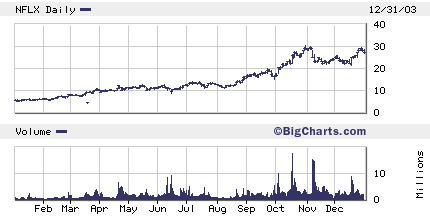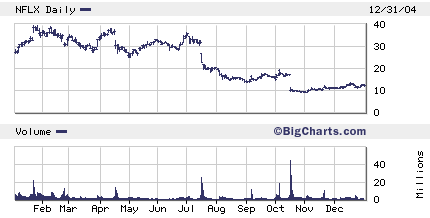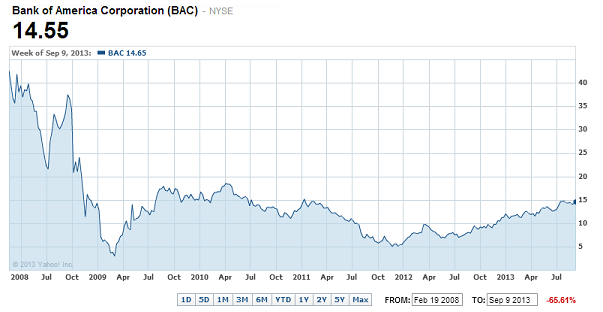Okay, so as a former believer in Sears Holdings as an investment, you might be thinking that I am getting into the stock once again. Well, not exactly. I still have some huge issues with the equity right now (though I do hold a position in the bonds). First, although nobody can refute that there is tons of value within Sears' real estate portfolio (billions of dollars), we can not ignore the fact that the retail operations are still bleeding cash. And as you can see from the pace of store closing shown above, there are still more than 2,000 of these stores open. Each day that passes brings with it more red ink. Even if Eddie Lampert decided to eventually shut down the retail stores completely, that process would take years. It could take a decade to transform Sears Holdings, in an orderly fashion, into a pure-play real estate company.
The reason that is a problem for would-be equity investors is that the time value of money shrinks how much that real estate is worth today. Let's take Baker Street Capital's estimate of Sears' real estate portfolio; $8.6 billion. Even if this number is in the ballpark (given that they own the stock we can assume this figure is on the high side), if it takes 10 years for Sears to unlock this value through property closings, divestitures, redevelopments, etc. then the present value of these properties is actually a fraction of $8.6 billion. It's not like they could just sell them all to somebody tomorrow.
The second problem I have with the stock is the supposed value ascribed to the company's other assets. About half of the value of the company is outside of the real estate portfolio, according to Baker Street. The bulk of those assets include the Kenmore, Craftsman, and Die Hard brands, Lands End, the Sears online business, and the Sears home services and extended warranty businesses. Baker Street contends these assets taken together are worth another $6.8 billion. Keep in mind that the stock market values the entire Sears company at $6.2 billion today.
The core issue here is that Kenmore, Craftsman, Die Hard, Lands End, Sears Home Services, and Sears Extended Warranties all derive the vast majority of their revenue from Sears and Kmart stores. But what happens to these stores if Eddie Lampert decides to monetize the real estate by closing down stores, selling others, subleasing others, and redeveloping others? The value of all of these others brands declines dramatically. Good luck selling Lands End for a good price if you are in the midst of closing down Sears stores. Same goes for Kenmore, Craftsman, and Die Hard. Sure, those brands could be sold in other retail stores if they were independently owned, but the revenue gained would just be offset from the fact that Sears and Kmart stores were disappearing. In my view, Sears can either become a real estate company and shut down its money-losing stores, or it can continue to operate as a retailer with multiple owned brands. What it can't do is realize the full value of both at the same time, and yet that is exactly what Baker Street Capital (and other bulls on the stock) claim.
If you ask me, Sears should go the real estate route. It may take a long time, but shareholders should see some tangible benefits over time. Consider Seritage Realty Trust, the new company within Sears that holds 200 properties (or about 10% of the total). According to the Seritage web site, those properties control about 18 million square feet of space. Let's assume they are redeveloped and can generate $30 per square foot, on average. That equates to $540 million of annual net operating income. If Seritage was IPO'd it could be worth about $8 billion (at a 7% cap rate). That is why Sears shareholders have a margin of safety in the stock and why it is not going bankrupt. However, since that process would take so long to implement, it is also the reason why Sears stock today is not anywhere near the $100+ per-share valuations the bulls claim it is worth in a break-up scenario.
Full Disclosure: No position in Sears stock and long Sears bonds at the time of writing, though positions may change at any time.












